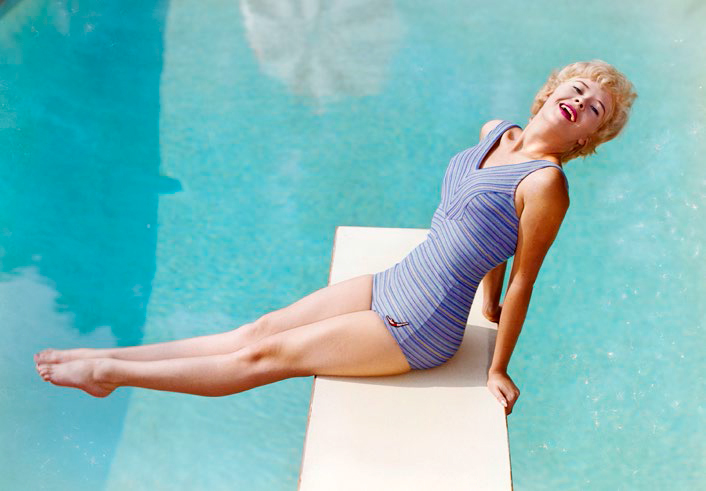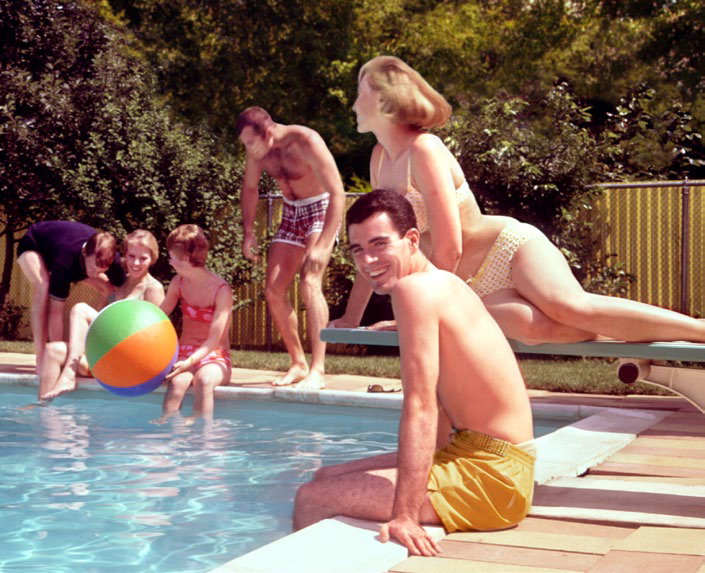Splash!
 |
|
|
 |
|
|
 |
|
|
 |
 |
|
|
There's something soothing about a swimming pool.
Not just the amazing artificial blue, but the absolute still flatness—until someone with legs tucked beneath elbows and arms cannonballs into the water.
Swimming pools as a manmade phenomenon go back eons. In Rome, Gaius Maecenas even built himself a heated pool a century before the Christian era.
But, in actuality and in our hearts, we know when and where swimming pools really got their start as consumer goods—during the mid-century modern era and in California. And the world was never the same again.
"When they first became popular in California, they made an enormous transformation in what people considered the family house," says Annie Kelly, co-author with her husband, photographer Tim Street-Porter, of the new book, Splash: the Art of the Swimming Pool.
"The average house suddenly became a resort, a place where you could recreate," Kelly says. "To have a swimming pool was really like bringing a vacation into your house. The prices got so low, developers could include them in their projects."
Pools were once found only on the estates of tycoons and movie stars. William Randolph Hearst had both indoor and outdoor pools at his castle at San Simeon, and Douglas Fairbanks and Marie Pickford had an early Hollywood pool at their Pickfair estate, 100 feet long and eminently boatable.
Many of California's foremost modernist architects pioneered the use of pools for their upscale clients. Pools were designed for swimming and general recreation, as another way of integrating the home with the outdoors, and for decorative effect.
Frank Lloyd Wright's Ennis House, from 1924, situated a rectangular pool in a courtyard that suggested a Mayan temple. Four years later, Wright's son, Lloyd Wright, created a compact pool in a small courtyard, with direct access to the home's interior through swinging doors. It could have served as a prototype to so many later, suburban pools. It is pictured in Splash.
Richard Neutra, an architect who put much focus on the psychic wellbeing of his clientele, often supplied them with pools.
For his career-making, steel-framed Lovell Health House from 1927, for a Los Angeles alternative medical practitioner, Neutra provided both a sunbathing area at the top of the house and a built-in, cantilevered swimming pool at the bottom.
Significantly, the Lovell pool was not in a garden alongside the house, but was built into the home's structure and elevated above the surrounding steep slope.
For film director Josef von Sternberg, in 1936, Neutra surrounded the sinuously curved Streamline Moderne San Fernando Valley home with a similarly curved moat. It's doubtful if von Sternberg—best known for his opulent, visually rich fantasies starring Marlene Dietrich—or a subsequent owner of the house, Ayn Rand—the chain-smoking conservative author with a cult-like following—ever swam in it.
Gunite, a form of sprayed concrete, was used occasionally for pools starting in the 1920s. Neutra used it for his Lovell house.




